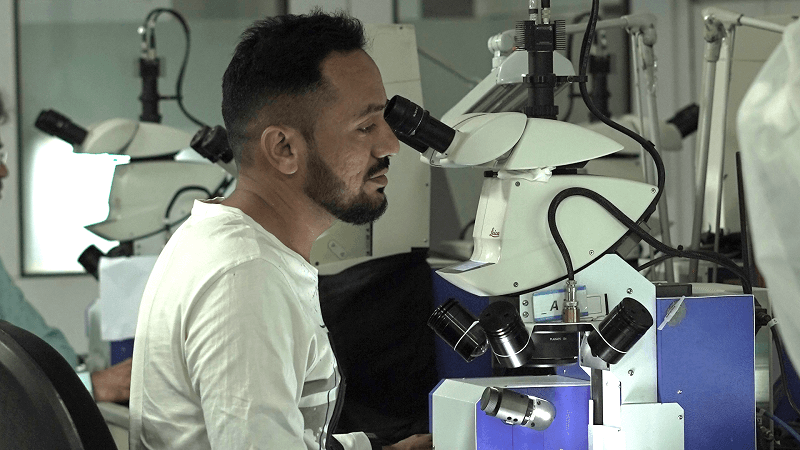
Diamond certification and Authentication process
These are the two major processes in the diamond industry whereby certification assures the genuineness and value of every priceless stone. Certification of diamonds is conducted by independent gemological laboratories; the process follows an inspection of a diamond, and grading quality is based on the color, cut, clarity, and carat weight.
The findings are documented in what is commonly known as the diamond grading report, which fully describes the characteristics of the diamond and contains a positive statement of the gemologist with regard to the quality. Authentication, however, makes it possible to establish the origin of the diamond; therefore, it assures that the diamond is not a conflict diamond.

Hence, the availability of authenticated and certified diamonds offers a platform for the buyer to make informed decisions, knowing fully well that they are investing in genuine and high-quality stones. Among other things that the two processes offer in the diamond industry is transparency and trust, therefore ensuring that cases of fraud are eliminated and that consumers are protected from counterfeit products.
This makes diamond certification and authentication some of the most critical processes in the industry since they will assure that the market of this valuable commodity is safeguarded and that the interests of the consumers and other stakeholders are protected.
The Role of Gemological Laboratories in Diamond Certification
The major role of gemological laboratories in the diamond industry is their independence in analysing the quality and genuineness of a diamond. The laboratories have highly trained and skilled gemologists who use very specialised and calibrated instruments to grade diamonds based on different criteria, such as colour, clarity, cut, and carat weight.
They ensure that the diamonds adhere to the set standards in the market and that they are properly represented. Certification from accredited laboratories ensures credibility and creates consumer confidence in quality and value and also makes sure there are fair trade practices in the industry.
They also assist in developing industry standards and research new stones by developing new techniques and treatments to be used in the evaluation of the diamonds.
These labs also help in determining and hence controlling critical issues comprising diamond fraud control, synthetic diamond detection, and conflict diamonds. In such a way, gemological labs help to keep the transparency in diamond trade ethics. In general, gemological laboratories are the institutions that look after the integrity and reliability of the diamond industry, protect the interests of consumers and keep the reputation of diamonds as symbols of beauty and value intact.
Microscopy and Spectroscopy in Diamond Analysis
Microscopy and spectroscopy are the two most critical analysis tools used in the analysis of diamonds, which help to provide the analyst with detailed information about the structure, composition, and quality of these very precious stones. Microscopic techniques, such as that of stereomicroscopy and scanning electron microscopy, help gemologists view the inside characteristics of the diamonds. These inside characteristics include inclusions, fractures, and growth patterns, which are determinant factors in the clarity and authenticity of a diamond.
These spectroscopy techniques are utilised either alone or in combination with microscopy techniques that are UV-visible, infrared, and Raman spectroscopy. The UV-visible light spectroscopy can determine some of the principal absorption and fluorescence features that are characteristic of different diamonds, and information on the origin of color and possible treatment of the diamond. Similarly, IR spectroscopy is used in the detection of molecular vibration in the diamond lattice, which assists in identifying some impurities or defects within it.

It would give information about the crystalline structure and integrity of the diamond and help to differentiate a natural from a synthetic or a treated from an untreated stone. Therefore, such microscopy and spectroscopy techniques form a potent tool in the hands of gemologists and researchers for accurate grading, authentication, and identification of diamonds, in many applications starting from gemstone certification to scientific research.
Blockchain Technology for Diamond Traceability
Among the recent developments, blockchain technology makes the diamond industry more transparent and traceable than ever before. Blockchain technology allows for a unique digital identification for each diamond, tracing it from the mine to the consumer.
The technology will provide a tamper-proof ledger that will safeguard every activity, from the mining of rough diamonds and their cutting and polishing to the time of sale. This is important, for the only way that consumer confidence will be brought along is by way of the blockchain, where its authenticity will be assured, and through this, all sorts of conflict and unethical practices are, therefore, not supported.

Blockchain also makes the diamond business more effective and reliable with enabled process automation. This reduces the opportunity for fraud with automated transactions via smart contracts, providing the ability for instant and secure payment between all the involved parties on the platform.
Finally, blockchain eliminates additional fees and delays in the supply chain. Adoption of the latest blockchain technology for diamond traceability would help the industry keep the threshold of being ethical, gain trust with consumers, and set a path toward a better and, most importantly, sustainable and responsible future.








